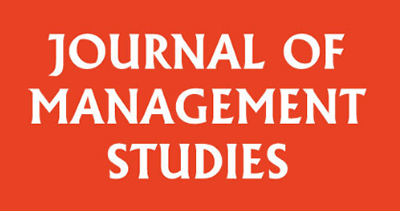
The problem is not just conflict occurrence, it is conflict intensity
Large-scale mining projects are often promoted for their economic potential, but they can simultaneously trigger significant social and environmental disruption, especially for communities whose livelihoods are closely tied to land, water, and other local ecosystems. While companies often ask whether conflict will occur, our research shifts the focus to a more crucial question: how intense will the conflict be? Conflict intensity matters deeply, as higher levels of escalation carry more severe consequences for both companies and communities: prolonged project delays, reputational damage for companies, community displacement, and even physical violence. By understanding the factors that contribute to intensity, firms and policymakers can design better strategies for conflict prevention and mitigation.
What did we study?
Our study examines the determinants of conflict intensity between mining companies and local communities, focusing on how communities’ dependence on environmental resources for their livelihoods contributes to escalating tensions. Examining conflict intensity, rather than mere occurrence, highlights the deeper social and ecological stakes and reveals how complex stakeholder interdependencies fuel or mitigate escalation.
What have we found?
The intensity of conflict is more than company actions or local grievances. It is amplified by the involvement and alignment of multiple stakeholders—including governments, civil society organizations (CSOs), and broader society. Simply put, mining conflicts are not bilateral disputes, but multi-stakeholder dynamics. Drawing on 318 global mining conflicts, our new research shows that conflict levels in mining projects is closely linked to two factors. First, when communities depend extensively on environmental resources for their survival, they tend to oppose projects that jeopardize their access to these resources. Second, the broader stakeholder context matters. Government priorities, levels of social inequality, and the role of CSOs influence whether tensions escalate or can be managed.
Stakeholder dynamics beyond the company–community dyad
Mining conflicts are rarely just bilateral issues between firms and affected communities. They unfold within a larger web of stakeholder relationships. Governments issue legal licenses to operate and set the tone for regulatory enforcement. CSOs, including non-governmental organizations (NGOs) may amplify community concerns or mediate between parties. Broader society plays a pivotal role: in more equal societies, support from broader society can help address community concerns and reduce resistance, whereas in highly unequal societies, the lack of such support often intensifies local resistance. Our study finds that conflict intensity is not solely a function of community grievances, but is shaped by how these wider actors engage, align, or clash. Stakeholder dynamics—not just company–community interactions—drive escalation.
The clash between legal and social licenses
In many countries, mining companies obtain legal licenses from the state and assume that this legal status is sufficient to operate. But in areas where land rights are ambiguous or contested—and where indigenous or local communities have lived on or used land for generations—companies face what we call a dual-license dilemma: legal permission without social approval. Communities may assert traditional or historical claims that directly challenge the company’s legitimacy. When firms treat stakeholder engagement as a procedural or compliance-based task, rather than a relationship-building process grounded in respect and trust, the risk of conflict escalation increases. In our research context—mining projects located near agricultural lands that serve as key environmental resources of livelihood for local communities—legal access alone does not guarantee social acceptance.
What makes conflict more violent?
The stakeholder environment surrounding mining projects plays a critical role in how conflict escalates. First, we found that government orientation in each mining project plays a critical role: when governments emphasize environmental protection and community rights, conflict intensity tends to decrease. In contrast, when governments prioritize economic growth and resource extraction, the potential for escalation increases. Second, broader societal inequality amplifies the conflict. In unequal societies, local communities often lack institutional support and voice, leaving them with few non-confrontational ways to express resistance. As inequality rises, so does the likelihood of more severe conflict. Third, CSOs do not appear to play a consistent moderating role. While we expected CSOs to mitigate conflict by advocating community rights, our empirical results suggest their influence varies greatly depending on context, calling for more nuanced future research.
What should managers do?
To avoid or manage conflict escalation, firms must begin by understanding the extent to which communities depend on local environmental resources. These dependencies are not just technical or environmental. They also serve as social triggers that determine how a project will be received. Companies must also acknowledge the dual-license reality. Legal permits may provide formal access, but true legitimacy must be earned through trust, transparency, and alignment with community values. Finally, firms must account for social fragmentation. In unequal or politically fragile settings, communities may have limited access to formal grievance channels, increasing the risk that resistance will take more aggressive forms. Supporting inclusive platforms for dialogue and investing in long-term relationships may help reduce the potential for conflict escalation.
Our research shows that conflict intensity in the mining sector is not simply a matter of operational risk. It is a reflection of deeper institutional, social, and ecological tensions. Firms that approach stakeholder engagement with narrow, compliance-oriented mindsets may not only face community pushbacks but also find themselves in the potential for serious, high-intensity conflict. Addressing these challenges requires a relational, multi-level approach grounded in empathy, equity, and systemic awareness.

0 Comments